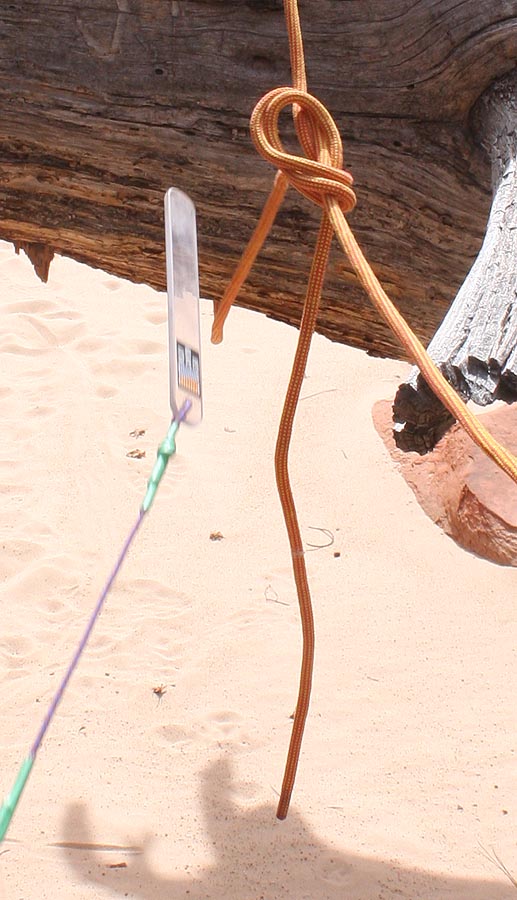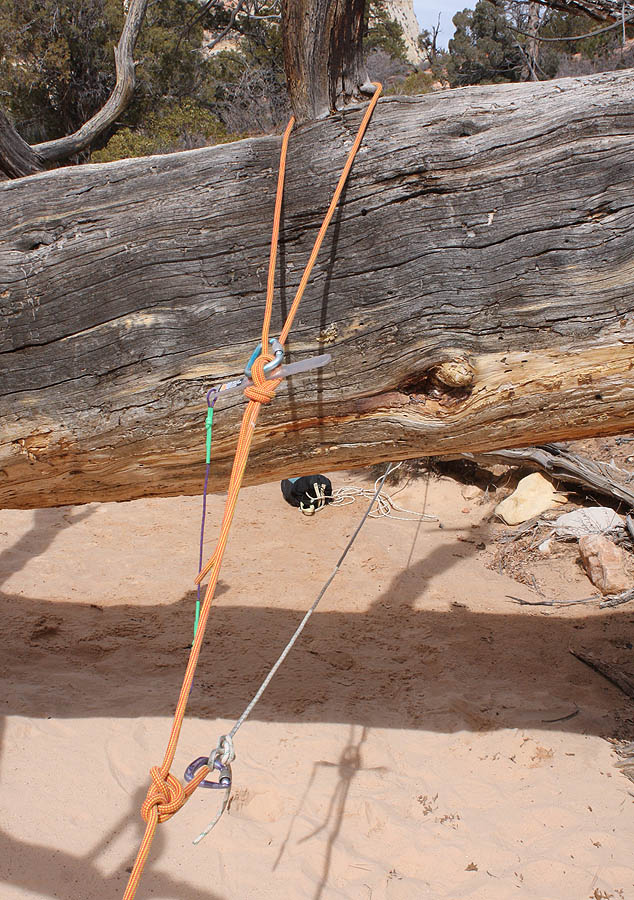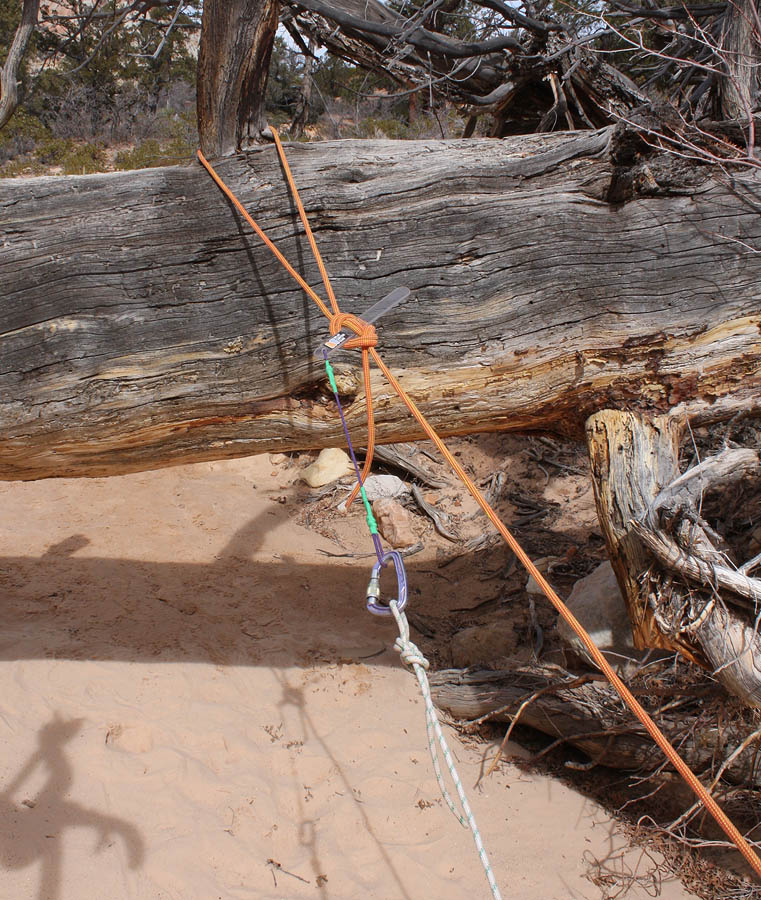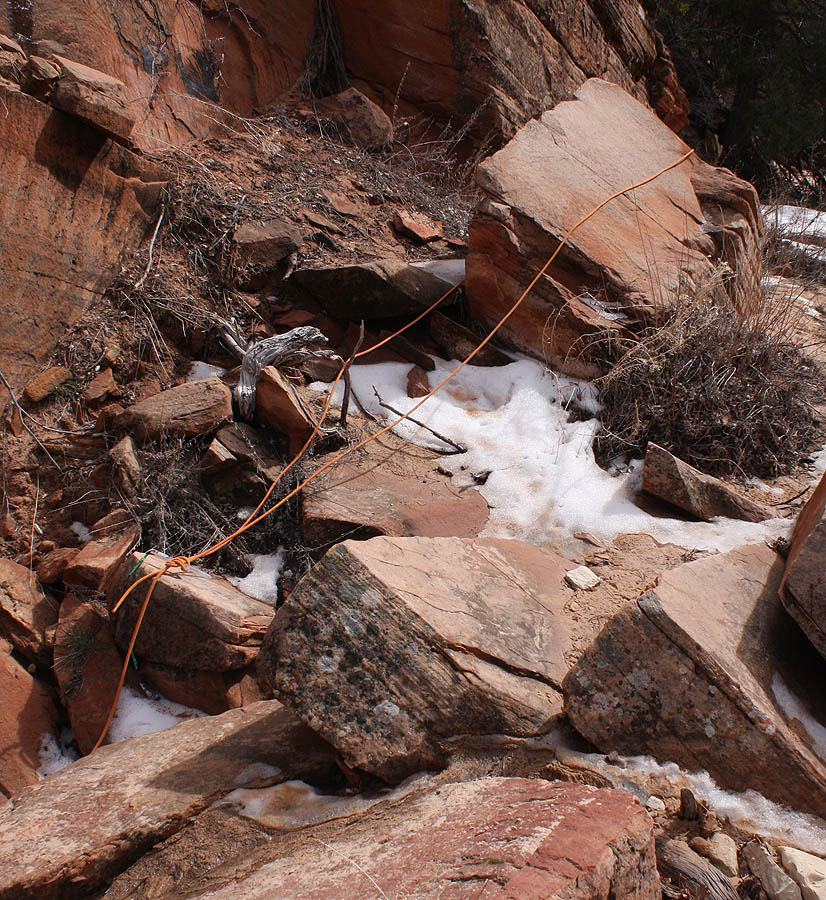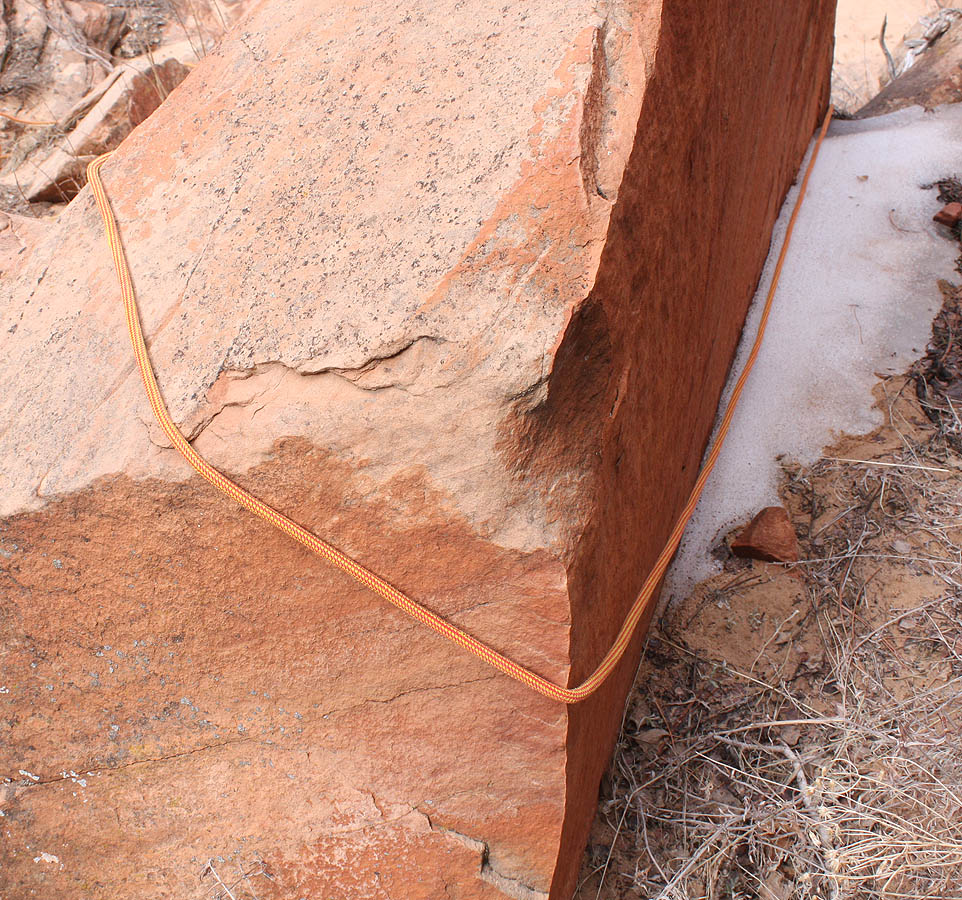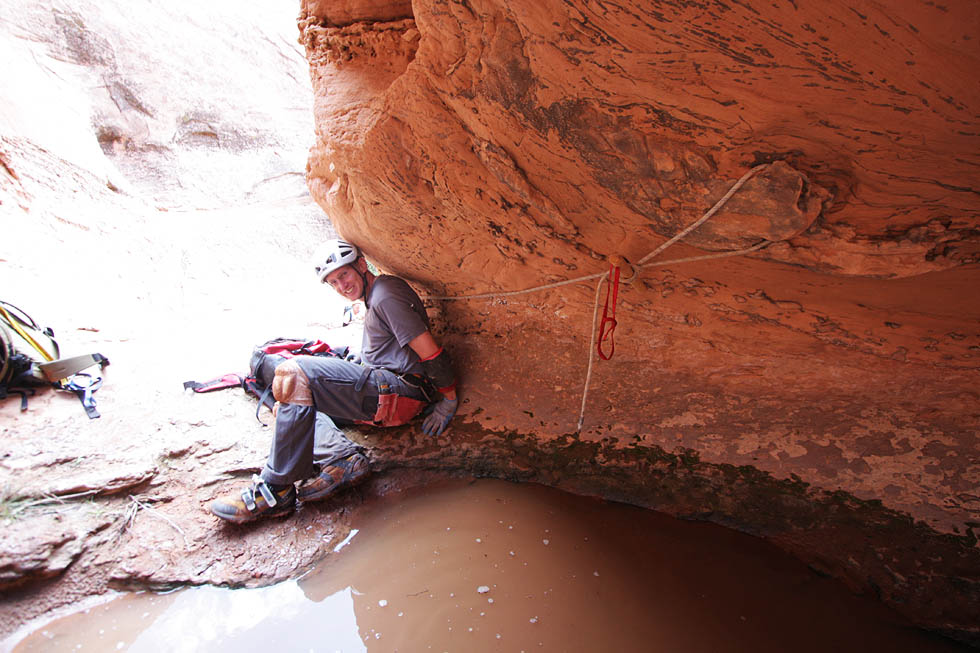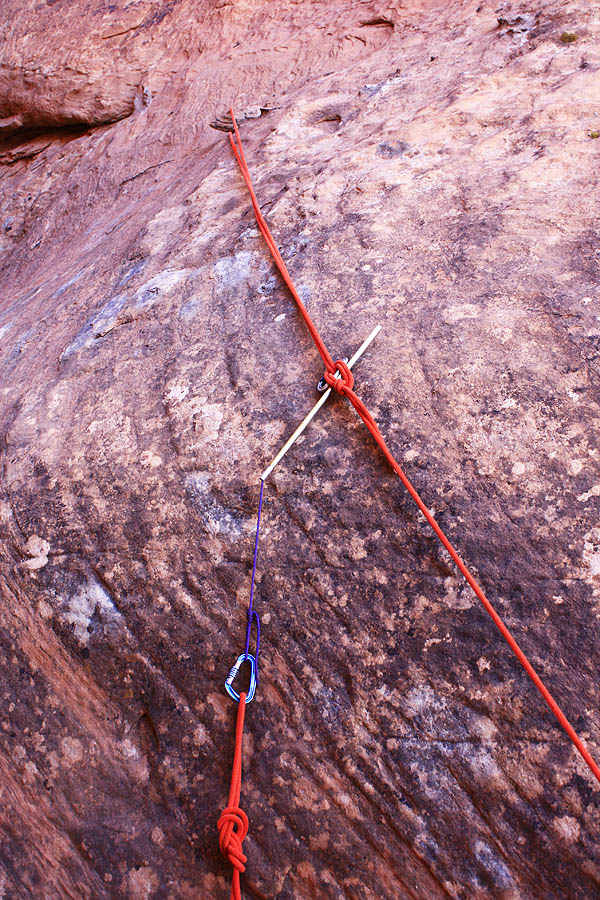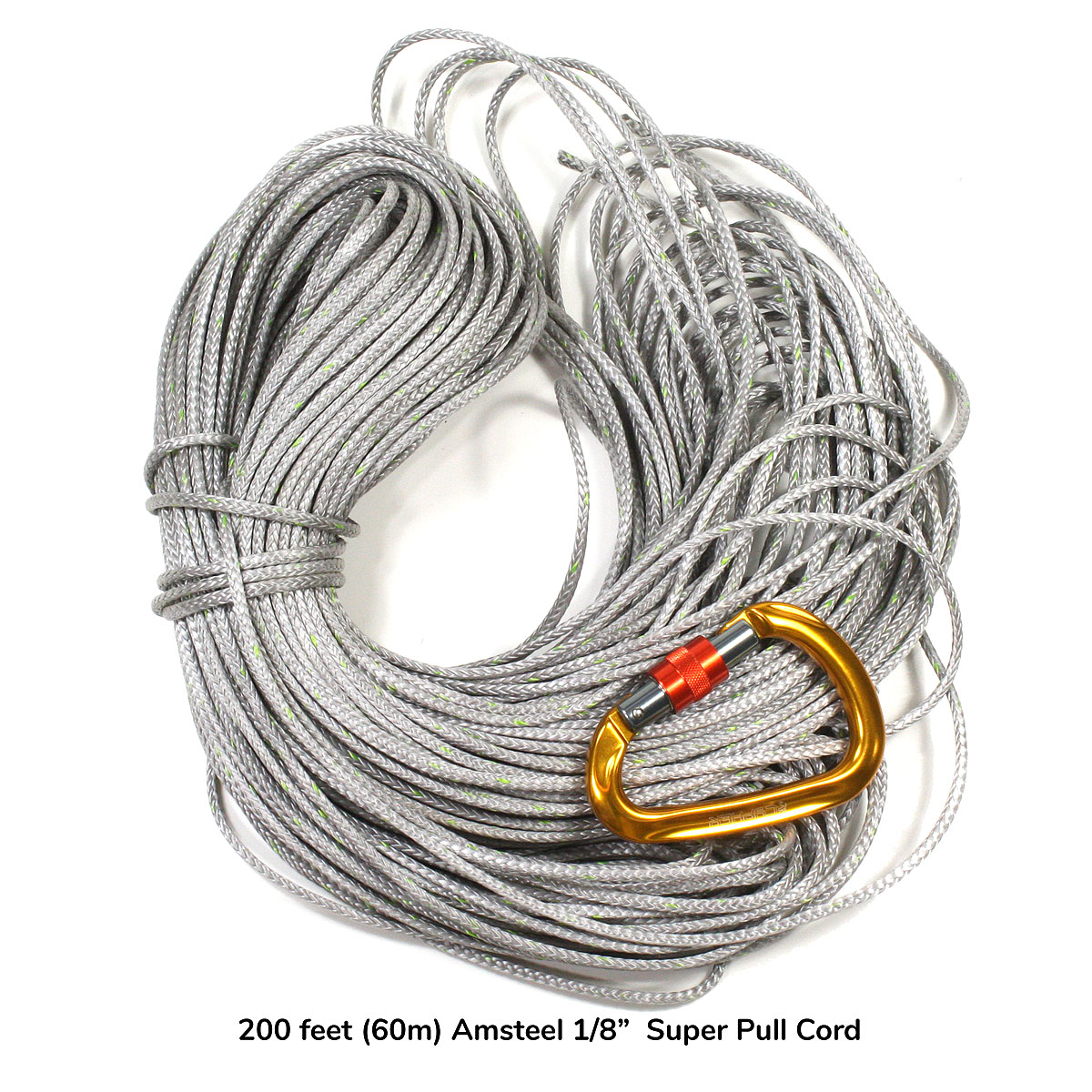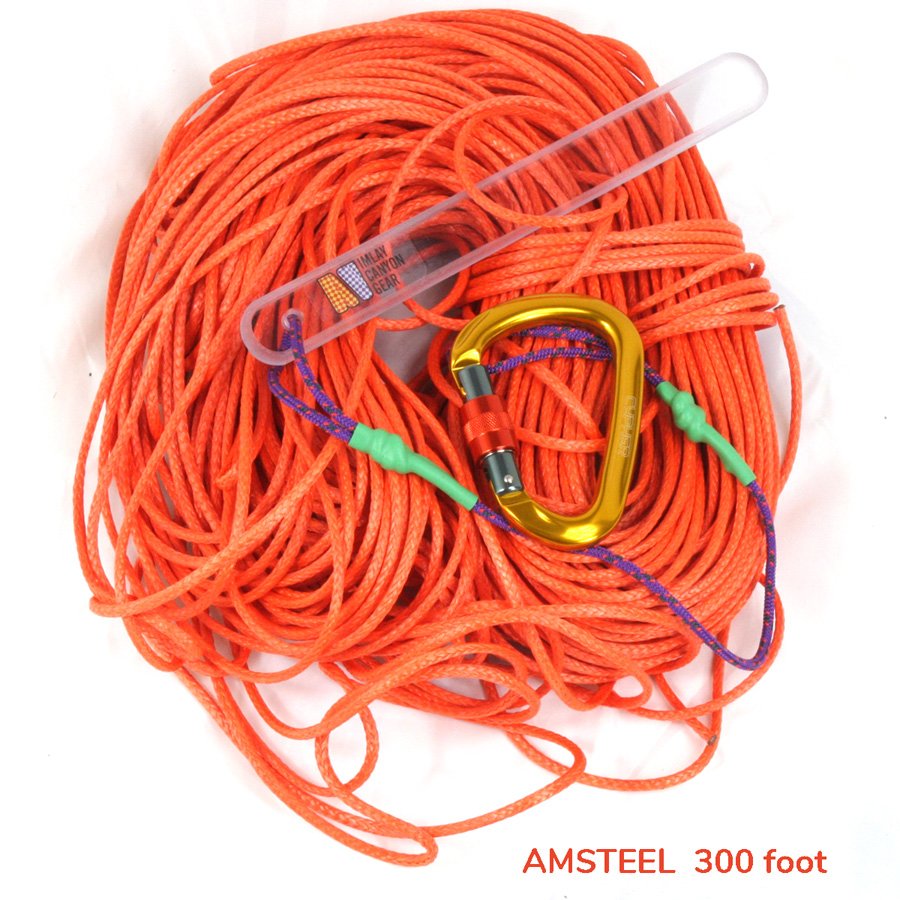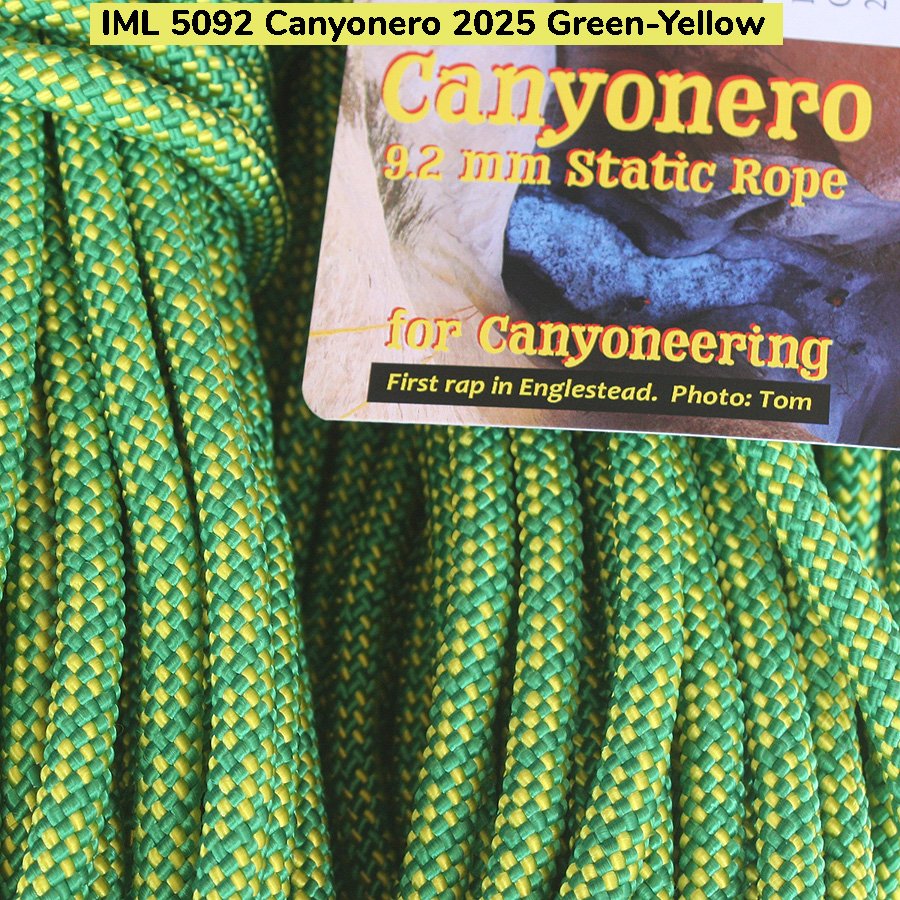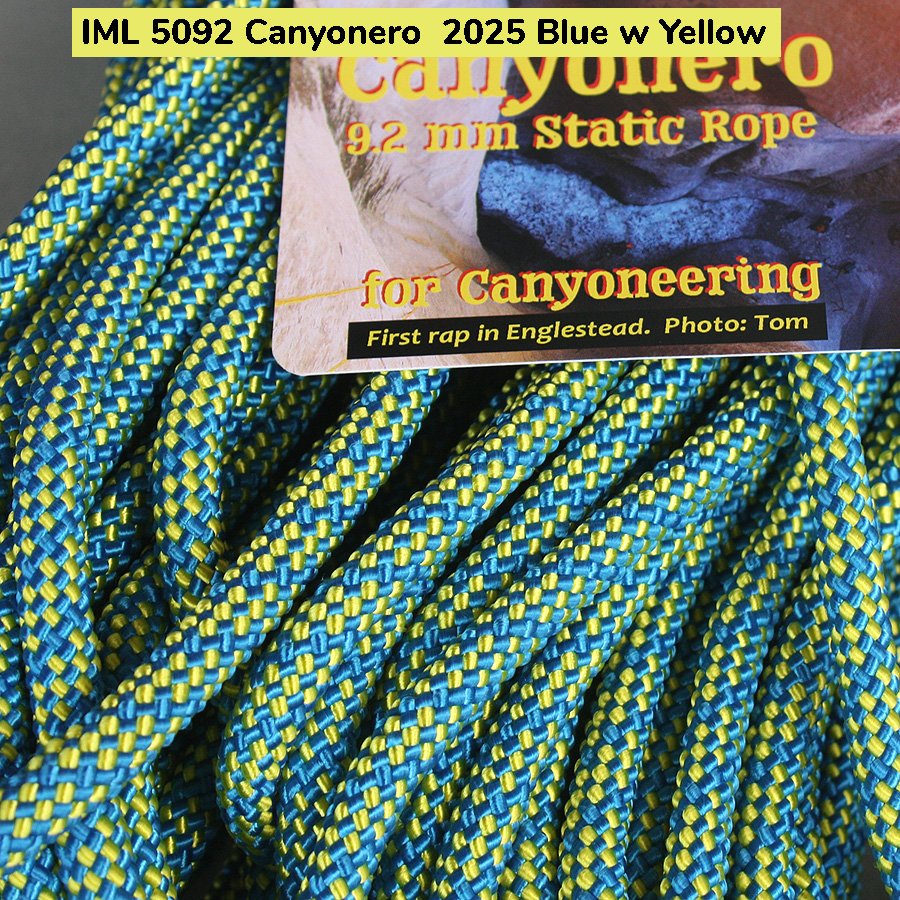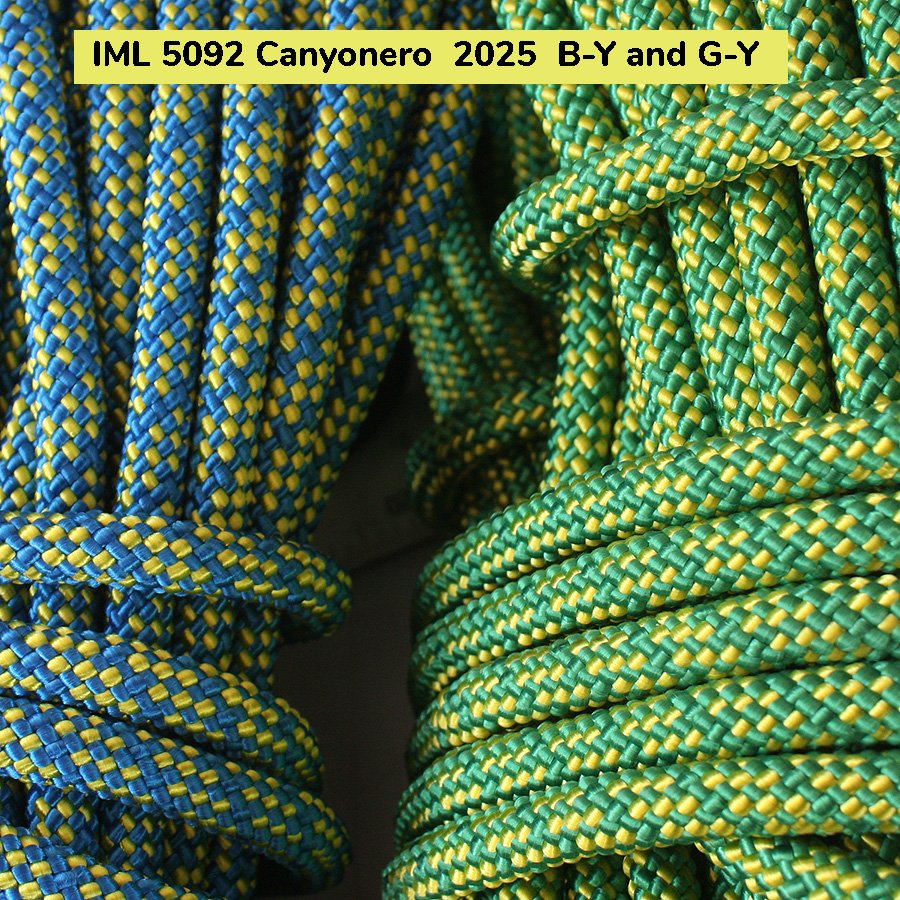The FiddleStick: An Advanced Anchor Tool for Canyoneering
The FiddleStick
is an advanced canyoneering anchor tool. It is a new approach to retrievable anchoring, opening up a wider range of possible anchors, and making it possible to descend more canyons while leaving nothing behind (aka “ghosting”). As an ADVANCED anchor tool, it requires skill, practice and understanding to use safely. Even when used properly, it has the possibility of failing, resulting in severe injury or death, or being stranded in a canyon with your ropes hopelessly stuck.
The FiddleStick retrievable anchor system has some great benefits:
Rope grooves are virtually eliminated.
Anchors can be well back from the edge of the rappel.
Anchors can be around corners.
Uses little to no webbing.
Can easily and safely “ghost” in many circumstances.
Faster to rig than most any other anchor.
Lightweight.
Fun!
The “FiddleStick” is both a product and a concept. It is certainly possible to make very reasonable FiddleSticks at home, but it is somewhat difficult to improvise them in the field from commonly carried materials.
While it is possible to use the FiddleStick on traderoute canyons, to not contribute to deeper rope grooves or make some pulls easier, it really shines on first descents and in rarely-travelled backcountry canyons where it is of substantial benefit to not leave junk behind.
Using the FiddleStick
The FiddleStick is based on the Stone knot. The Stone (Stein) knot can be used to secure both sides of a doubled rope so both can be rappelled on. The concept is the same when FiddleSticking, but one end of the rope is just a short tail, while the other (long) end is used to rappel on. A pull cord removes the FiddleStick, and the Stone knot falls apart, leaving a short, clean end of the rope to be pulled out from around the anchor, and down the drop.
There are several versions of the Stone Knot, but the one we recommend for the FiddleStick is the Upward Overhand Stone, which has the most consistent disintegration once the Stick is pulled. Learn more about tying and uses of the Stone knot at: CUSA Tech Tip: The Stone Knot
By replacing the carabiner in the Stone knot with a stick and leaving one strand short, you create a very slick retrievable anchor. Upon removing the stick, the knot falls apart, and only the short end of the rope needs to pull from around the anchor.
The above description makes FiddleSticking seem pretty simple. Sometimes it is; sometimes it is not. Here is a rundown on some of the many subtleties:
What Can be Used as an Anchor
The FiddleStick allows a wide range of objects to be used as anchors that previously would have been overlooked or not utilized because the length of webbing needed to use them would have been too much.
Important Aspects of Anchor Construction:
Solid, really solid. Large trees, wedged logs, big wedged rocks, etc. Put a rope around it, pull real hard and make sure it doesn’t wiggle. I’ve seen large stout bushes move easily under load and big rocks budge unexpectedly—test your anchor.
Snag factor. The tail end of the rope needs to run freely around the anchor all the way to the drop. Also, the FiddleStick needs to fall cleanly. Look for branches, rocks, or other items that could snag either piece of hardware. Have the first person down test the pull to make sure it will work.
Pinch factor. V-shaped grooves can and will snag your rope, especially if they get a chance to jam in the pinch while weighted. If necessary, add a short piece of webbing around the anchor and run the rope through the webbing. Because you are only pulling the short end of the rope through the webbing, a rapide is not necessary. Leaving behind a short piece of webbing is better than getting your rope stuck.
Angle to knot. If the anchor is wide, such as a large log or rock, and the stone knot is close to it, the rope will converge on the stone knot at a wide angle. This is potentially dangerous. Use webbing around the anchor in this case, or tie the Stone knot further from the object.
Rig the FiddleStick in plain sight. While this is not a requirement, it is nice if the FiddleStick can be seen while getting on rappel, and even better if it can be seen from the bottom of the drop. This allows you to keep an eye on it at all times.
Rig the FiddleStick in “free space” (vs. against wall). Rig so the FiddleStick is in free space. This prevents the Stick getting stuck or knocked out by pushing against the wall. While often possible, sometimes the Stick must be placed against the ground or a wall—make sure that the ground or wall will not PUSH the FiddleStick either IN or OUT.
Setting up the rappel
Rig webbing if necessary. In cases where the rope won’t pull freely around the anchor, the angles are bad, a cairn is required, etc., use a short loop of webbing around the anchor, and run the rope through the webbing. Rapides are not required in most cases.
Rope around anchor. Put the tail of the rope around the anchor (or through the webbing if used). Leave several feet of rope past the point where you will tie the stone knot.
Tie Upward Overhand Stone knot, insert carabiner, lock around one upper strand. I often also put the FiddleStick in place at this point, though that is not necessary.
Setup a backup. Tie an Alpine Butterfly in the rappel strand and use a separate rope to link this back to a backup anchor or meat anchor.
Evaluate the stone knot/FiddleStick as folks rappel:
Does it bang up against the wall?
Does it twist or spin?
Does it remain in free space (if possible)?
Does the rope stay in place around the anchor?
Send down most or all of the party but the Last Person.
Last Person: Loosen the Stone Knot and insert the FiddleStick. Remove the Stone Knot carabiner.
Snug the knot up on the FiddleStick.
Deploy the pull cord. Securing the cord to your harness, toss the pull cord bag to the bottom. Have your partners manage the pull cord, so it is out of the way of the final rappeller. Using a carabiner, clip the pull-side cord or rope to the FiddleStick cord. Do NOT tie the pull cord to the FiddleStick’s cord as this will wear out the cord quickly. Evaluate if the security of the FiddleStick against the weight of the pull cord is sufficient. If not, add some security to the pull cord side by:
Snagging the pull cord on a bush or stick, that can then be easily broken by a pull from below;
Back from the edge, stack a rock or two atop the pull cord, to hold it until pulled from below. Be sure the stack is far enough back that the rock will not be knocked over the edge;
As you go over the edge, trap a bight of the pull cord under the rappel rope. This only works if tension will be maintained on the rappel line for the full length of the rappel.
It is very important when rappelling to not snag the pull cord on the way down. If the pull cord needs to be carried down, have the second-to-last person carry it while they rappel. As last person, it is VERY DANGEROUS to rappel with the pull cord deploying as you go. If it snags as you descend, you might pull out the Stick.
On long rappels, it is VERY HELPFUL to use a lightweight pull cord that will put less weight on the retrieval side.
Retrieving the FiddleStick and Rope
Once everyone is safely down and you are sure you do not want the rope for retreat or any other reason you can pull the FiddleStick and rope.
Pull steadily and firmly without jerking until you feel FiddleStick “pop”. It may come out easily and it may take a tug. If the rope is really sandy and/or wet it will take more pulling. I prefer to pull steadily and firmly but it might take a good tug. The FiddleStick will usually fly out of the knot.
The FiddleStick might fly over and/or onto your heads. Wear helmets and be aware. Don’t hit your friends in the face with a FiddleStick. They get mad.
The FiddleStick could get stuck on something. You checked really carefully ahead of time, right? If it sticks after coming out of the knot DON’T PULL IT YET.
If the FiddleStick doesn’t come out you are “jacked up” or “buggered” (technical terms).
Pull the rope. Pull steadily, don’t jerk. You don’t want to flip the tail into a tangle. The rope will often just fall out when the FiddleStick is removed. Otherwise, it shouldn’t take more force than pulling that short tail around the anchor.
If the rope doesn’t come easily it may have caught in a constriction or somehow gotten a hitch around itself (or something else); hogging on it will often just get it more stuck. Try flipping it all about and tugging gently from different angles before pulling with great force. There’s always time for fully hogging on it later (which works sometimes… or maybe it will make it more stuck).
Problems with the FiddleStick:
The FiddleStick is pretty reliable, but there are a few situations you can encounter if not careful.
“FiddleStuck”
We achieved a state of complete FiddleStuck due to a choke on an intermediate level of a 200’ rap. In this case, a small rock was just the right shape to first catch the knot of the FiddleStick pull cord and hopelessly snag it:
(Picture after rope is removed. FiddleStick fell nicely in this groove with its knot caught on small rock.)
Then, when we pulled the 200’ rope, it fell on the same rock and also caught (other picture).
Note that the rope is solidly wedged by the force of all of us hogging on it from below. This tangle was NOT safe to climb on; the rock was easily removed and could have been dislodged when jugging up over the edge. The canyon was redone the next day for photos and rope retrieval. With 20/20 hindsight, the problem was pretty obvious!)
Check carefully for anything that could snag the FiddleStick or rope and move, cover, or protect them as best as possible. The FiddleStick often flies out of the knot and could catch on things overhead or across from the anchor. Keep this in mind when rigging and pulling the FiddleStick.
Care and feeding of your FiddleStick:
Imlay Canyon Gear FiddleSticks are made from Lexan, a robust plastic. Check the stick itself for cracks each time you use it, and examine the cord for wear-spots and defects. If the retrieval cord is compromised, it might break when you try to retrieve the Stick. Send the Stick in for a new cord, or replace it yourself.
The FiddleStick was developed as a group project over the course of two years. People who made significant contributions to the effort include: Jenny West, Jonathan Zambella, Luke Galyan, Steve Fisk, Steve Ramras, Mark Rosen, Brendan Busch, Kody Prisbrey and Drue Kehl who came up with the name. Thanks to all for helping make this possible.
In the gallery, some more photos that illustrate some of the points.
Enjoy, and be careful out there. Gravity is an unforgiving dance partner.
Tom Jones, Mt Carmel, March 2013










